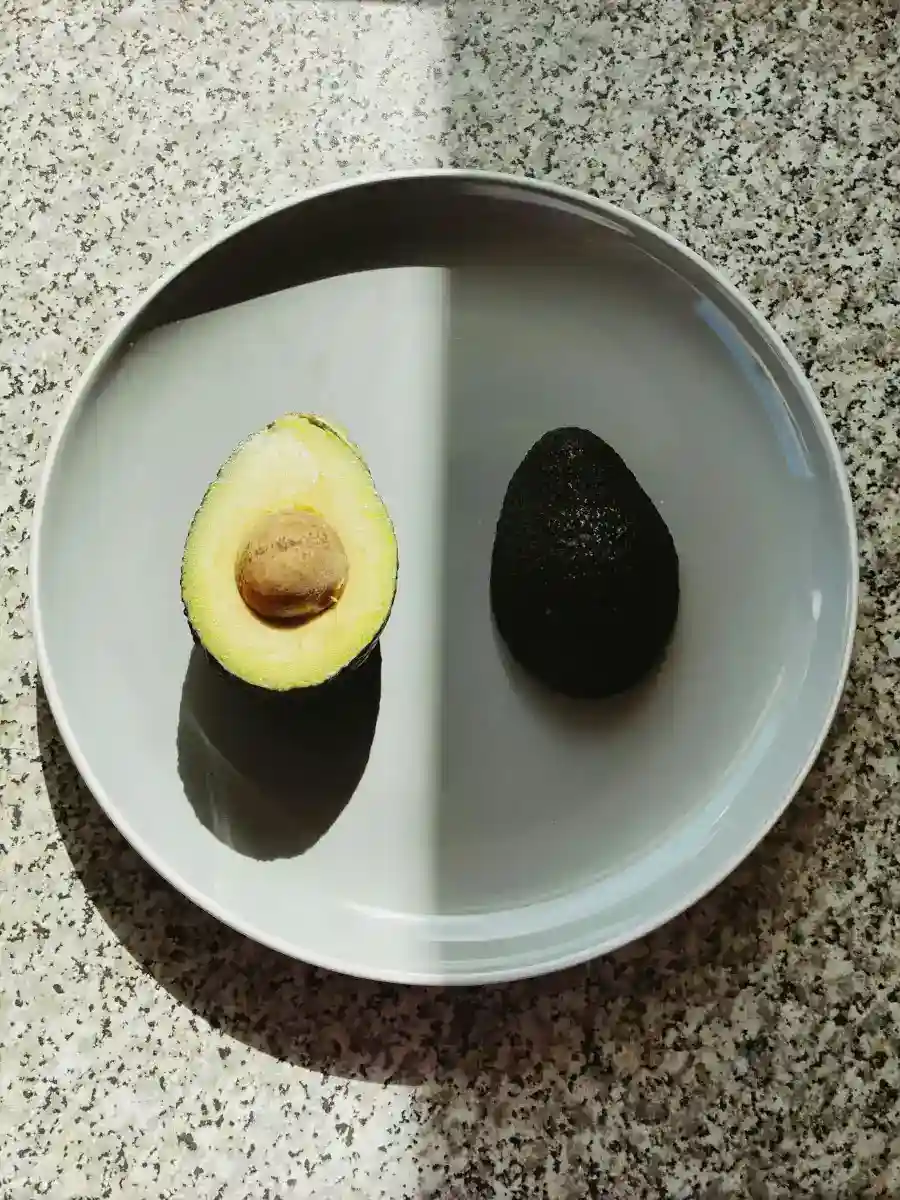Elimination Diet: Benefits Plan & Is It Good for Weight Loss

Unravel the Mystery: How Does an Elimination Diet Help Identify Troublesome Foods?
An elimination diet is a powerful tool to uncover which foods may be causing you discomfort or harm. This dietary approach has been used for decades by allergists and registered dietitians to help individuals identify food intolerances sensitivities and allergies. What is an elimination diet and how can you do it?. Elimination diets work by removing certain foods known to cause uncomfortable symptoms and then carefully reintroducing them while monitoring for reactions.
This process helps to pinpoint which foods your body may not tolerate well. Its important to note that food intolerances and sensitivities are common affecting up to 20 of the people worldwide. By following an elimination diet you can gain valuable insights into your bodys relationship with food. You'll learn which foods can cause digestive issues skin irritations or other unpleasant symptoms. This knowledge can empower you to make dietary choices that support your overall health and well-being. When embarking on an elimination diet its crucial to approach it systematically and with the guidance of a healthcare professional.
By carefully planning and executing this diet you'll be more likely to achieve accurate results and improve your understanding of your bodys unique needs. In the following sections well delve deeper into the specifics of how to conduct an elimination diet what foods to remove and reintroduce and how to interpret your bodys reactions. By the end, you'll have a solid understanding of this valuable diagnostic tool and how to use it to optimize your health.
Together well explore the steps strategies and benefits of this insightful approach to identifying food intolerances and sensitivities. In the world of diets its easy to get overwhelmed by the sheer volume of information and options available. However when it comes to uncovering food intolerances and sensitivities an elimination diet stands out as a reliable time-tested method.
By temporarily removing specific foods and then carefully reintroducing them you can gain a wealth of knowledge about your bodys unique needs and reactions. The beauty of an elimination diet lies in its simplicity and adaptability. With the guidance of a healthcare professional you can tailor the diet to your specific concerns and symptoms. By focusing on whole nutritious foods and eliminating potential triggers you will not only investigate food intolerances but also nurture your body with a healthful diet.
Of course its important to remember that no two individuals are alike. What works for one person may not work for another and its crucial to approach an elimination diet with an open mind and a willingness to listen to your bodys signals. By doing so, you'll be more likely to uncover hidden food intolerances and sensitivities, ultimately paving the way for a healthier, happier you.
So are you ready to embark on this exciting journey of self discovery and improved health? During the next section well explore the specifics of how to conduct an elimination diet including which foods to remove and reintroduce and how to interpret your bodys reactions. Now lets dive into it. By following an elimination diet youre taking an active role in understanding your body and its relationship with food.
While it may require some patience and dedication the insights gained can lead to lasting improvements in your overall health and well-being. In summary an elimination diet is a powerful tool for identifying food intolerances sensitivities and allergies. By removing specific foods and then carefully reintroducing them you can gain valuable insights into your bodys unique needs and reactions. With the guidance of a healthcare professional, you can tailor the diet to your specific concerns and symptoms, ultimately paving the way for a healthier, happier you. Stay tuned for more detailed information on how to conduct an elimination diet effectively and accurately.

Could a Tailored Elimination Diet Unveil the Culprit Behind Your Tummy Troubles?
An elimination diet is a short-term eating plan that involves removing certain foods from your diet which you suspect your body may not tolerate well. Lasting only 5-6 weeks this diet is useful for individuals with a sensitive gut food intolerance or food allergy as it helps identify the specific foods that contribute to their symptoms. Elimination diets may alleviate various gastrointestinal symptoms such as bloating gas diarrhea constipation and nausea.
Then by carefully reintroducing suspected foods one at a time you can monitor your bodys reaction and determine which food or foods cause discomfort. There are numerous types of elimination diets each focusing on specific foods. Once you identify a food intolerance you can choose to avoid that food to prevent adverse symptoms. However if you have a known or suspected food allergy it is crucial to follow an elimination diet under the guidance of a medical professional.
Reintroducing a food allergen can trigger a dangerous life-threatening condition called anaphylaxis. If you suspect a food allergy consult with a doctor before starting an elimination diet. Allergy symptoms include rashes swelling hives and difficulty breathing. In summary an elimination diet can be a valuable tool in identifying food intolerances and managing symptoms. However when dealing with potential food allergies always seek professional medical advice to ensure your safety.

Think Your Bodys Got a Food Feud? Uncover the Culprit with an Elimination Diet!
An elimination diet is a method used to identify foods that may be causing uncomfortable symptoms or triggering allergic reactions. This diet is divided into two phases elimination and reintroduction. During the elimination phase which lasts approximately 2-3 weeks you remove foods that you suspect are causing issues. These foods are typically ones that you think your body cant tolerate or that have caused uncomfortable symptoms in the past.
Examples of foods that are eliminated during this phase include nuts corn soy dairy citrus fruits nightshade vegetables wheat gluten pork eggs and seafood. By removing these foods you can determine whether your symptoms are caused by food or something else. If your symptoms persist after removing the foods for 2-3 weeks its important to contact a doctor as the issue may not be related to diet.
The reintroduction phase is the process of slowly bringing eliminated foods back into your diet. Each food group should be introduced individually over 2-3 days while searching for symptoms. There are some symptoms to watch for including rashes and skin changes joint pain headaches or migraines fatigue difficulty sleeping changes in breathing bloating stomach pain or cramps and changes in bowel habits. If you do not experience symptoms during the reintroduction phase you can assume that the food group is acceptable and move on to the next group.
However if you experience adverse symptoms then you have identified a trigger food and should remove it from your diet. The entire process including both the elimination and the reintroduction phases takes roughly 5-6 weeks. It is important to note that if you plan to eliminate many food groups you should seek advice from your doctor or a dietitian. Eliminating too many food groups may cause a nutritional deficiency.
In summary an elimination diet is a method used to identify trigger foods that may cause uncomfortable symptoms or allergic reactions. By following the two phases of elimination and reintroduction you can determine which foods are safe for you to eat and which ones should be avoided.

Could Nightshades Be the Culprit Behind Your Digestive Woes? Uncover the Truth with an Elimination Diet!
An elimination diet is a restrictive meal plan that removes certain foods to identify which ones may be causing adverse reactions. The stricter the diet the more effective it can be in pinpointing problematic foods. However, its important to consult with a healthcare professional before starting, as restrictive diets can lead to nutritional deficiencies and disordered eating.
Some common foods eliminated during the initial phase include citrus fruits nightshade vegetables nuts and seeds legumes starchy foods meat and fish dairy products fats beverages spices and condiments and sugar and sweets. A 2023 study suggests that nightshade vegetables such as tomatoes peppers and eggplant may potentially cause gastrointestinal reactions in individuals with irritable bowel syndrome ibs and inflammatory bowel disease. Its crucial to pay attention to your bodys reaction to the elimination diet. Also if you suspect that other foods not on the list are causing you discomfort consider removing them.
However its important to ensure that you are still consuming a balanced and varied diet to maintain optimal nutritional health. In conclusion an elimination diet can be a helpful tool in identifying food sensitivities but it should be approached with caution and under the guidance of a healthcare professional. By carefully monitoring your bodys response and maintaining a balanced diet you can successfully navigate an elimination diet and potentially improve your overall health. (1) nightshade vegetables and gastrointestinal symptoms in irritable bowel syndrome and inflammatory bowel disease: a systematic review.. Nutrients, vol. 15, no. 3, 2023, p. 697., doi:10.3390/nu15030697.

Elimination Diet: Can It Still Serve Up Delectable and Nutritious Meals?
An elimination diet doesnt have to be bland or boring. Despite its restrictive nature there is still a wide variety of foods you can enjoy while following this diet. Fruits, for instance, are a great option, with most types being allowed, excluding citrus fruits. Vegetables are also on the menu with the exception of nightshades. Whenever it comes to grain you can opt for rice buckwheat or quinoa. Meat and fish are excellent sources of protein on an elimination diet.
It's possible to choose from turkey lamb wild game and cold-water fish like salmon. Dairy substitutes such as coconut milk and unsweetened rice milk are also permitted. Consider using cold-pressed olive oil flaxseed oil and coconut oils for fats. Beverages are limited to water and caffeine-free herbal teas. Yet even with these restrictions you can still create delicious and healthy meals. Black pepper fresh herbs and spices excluding cayenne pepper paprika and apple cider vinegar are allowed so feel free to experiment with them to add flavor to your dishes.
Designing new recipes and experimenting with different herbs and spices can help you stay motivated during this restrictive phase. In conclusion an elimination diet doesnt mean giving up on delicious and healthy meals. When following this diet you can still enjoy a wide variety of dishes fruits vegetables grains meats fish dairy substitutes fats beverages and spices. Keep yourself motivated by trying new recipes and experimenting with different flavors.

Uncover Hidden Food Intolerances: Which Elimination Diet Fits Your Needs?
An elimination diet is a method used to identify foods that may be causing adverse reactions in the body. Besides the traditional elimination diet there are several other types that can be implemented. The low-fodmap diet removes fodmaps or short-chain carbohydrates that some individuals have difficulty digesting. This diet has been found to be particularly effective for those with irritable bowel syndrome. This is another type of elimination diet called the few foods elimination diet. This diet involves eating a combination of foods that are not typically consumed in ones regular diet.
An example of this is the lamb and pear diet which is popular in the united states. In this diet the idea that consuming unfamiliar foods may help identify food triggers is based on. The rare foods elimination diet is similar to the few foods elimination diet but it involves eating only foods that are rarely consumed. This is based on the premise that these foods are less likely to trigger symptoms. Typical foods on a rare diet include yams buckwheat and starfruit. The fasting elimination diet involves strictly drinking water for up to 5 days then gradually reintroducing food groups.
This diet should be done only under the supervision of a medical professional as it can be dangerous. Other types of elimination diets include lactose-free sugar-free gluten-free and wheat-free diets among others. These diets can be particularly beneficial for those with food sensitivities or allergies. In conclusion elimination diets can be a useful tool in identifying food triggers and managing symptoms. With the variety of elimination diets available it is important to work with a healthcare professional to determine which diet is best suited for an individuals needs.

Elimination Diet: Your Key to Taming Troublesome Symptoms and Unveiling Hidden Food Intolerances?
An elimination diet is a powerful tool that can help you identify problematic foods and improve your overall health. By removing specific foods from your diet and gradually reintroducing them you can pinpoint which ones may be causing uncomfortable symptoms. However the benefits of an elimination diet extend beyond symptom reduction. For instance, it may help alleviate symptoms of irritable bowel syndrome (IBS), a common gut disorder affecting 11.2% of people worldwide.
Research shows that following an elimination diet can reduce symptoms of ibs by up to 26. Additionally an elimination diet may benefit those with eosinophilic esophagitis ee a chronic condition that causes inflammation in the esophagus due to allergies. By excluding trigger foods, more than 75% of ee patients experienced fewer symptoms and less inflammation in a 2005 study.
Evidence suggests diets can also reduce symptoms of attention deficit hyperactivity disorder adhd a behavioral disorder that affects 3-5 children and adults. While children should only follow such a diet under medical supervision studies indicate that eliminating specific foods can help alleviate adhd symptoms in sensitive individuals. Elimination of diets may also improve skin conditions like eczema which affects many people who find that certain foods worsen their symptoms.
Research has found that elimination diets can reduce eczema symptoms providing relief for those suffering from this skin condition. Furthermore an elimination diet may help reduce chronic migraines by removing inflammation-causing foods. A study involving 50 patients with frequent migraine attacks found that following an elimination diet for two months significantly decreased the number of headache attacks.
In summary elimination diets offer numerous health benefits beyond symptom identification. By carefully following an elimination diet you can potentially improve ibs ee adhd eczema and chronic migraine symptoms. Consult with a medical professional before starting an elimination diet to ensure proper guidance and nutritional support.

Elimination Diet: A Delicate Balance of Food Restriction and Nutrient Intake How Long Is Too Long?
An elimination diet can be a useful tool to identify problematic foods but its not without risks. For first and foremost its recommended to follow this diet for only 4 to 8 weeks. Going beyond this time frame can lead to nutrient deficiencies as certain food groups are eliminated. With children and individuals with known or suspected allergies its crucial to be extra cautious. They should only undertake an elimination diet under the guidance of a medical professional.
This is because children are more susceptible to severe reactions when reintroducing food groups such as anaphylaxis when. This heightened sensitivity can occur due to the bodys increased reactivity after a period of avoidance. An elimination diet is in essence a powerful tool but it should be approached with care and knowledge. When children or individuals with allergies are involved always seek professional advice.